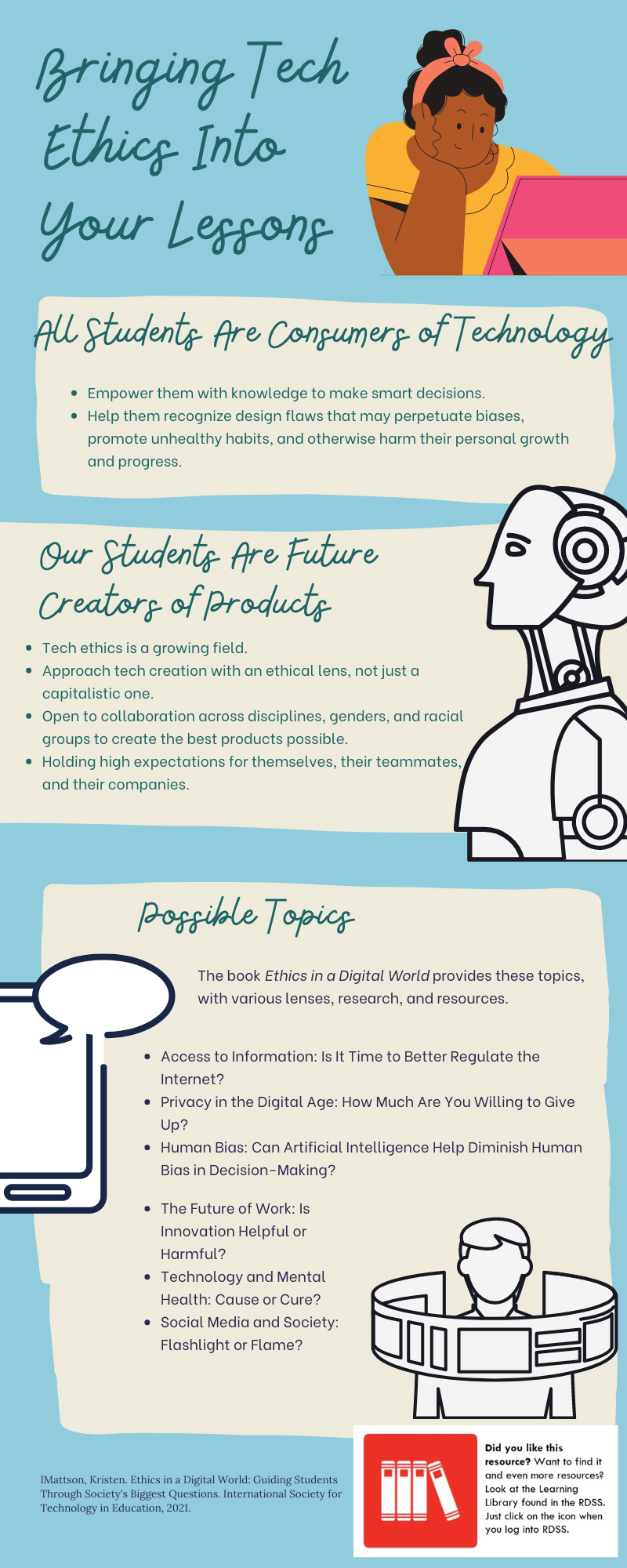Teaching Digital Ethics
Guest User
We constantly teach children the difference between right and wrong, such as pushing or hitting is hurtful or we walk in hallways to keep everyone safe. However, we may be missing a key component of right and wrong: ethics in technology.
Digital ethics relate to many issues such as inclusivity, safety, and how technology implemented today might impact life in the future. Furthermore, it is important to understand that humans make the decisions about how technology works, not the other way around. Here are some examples:
Studies have shown that sensors for hand dryers and soap dispensers don’t recognize darker colored skin tones.
Google recently fixed their image search function for “doctor” only showing white men in lab coats.
MIT is studying what a self-driven car should response if it is in a situation of hitting a pedestrian or another car.
These are three issues of hundreds that fall under the complex umbrella of digital ethics., and myriad leading education experts say we should be more diligent about teaching it in schools.
Dr. Kristen Mattson’s recent webinar and book, Ethics in a Digital World: Guiding Students Through Society’s Biggest Questions, tackle digital citizenship and ethics as well as our role, as educators, in teaching these concepts to students. Mattson addresses six big questions, which are supported by various claims, research, and ideas on how to lead these conversations with students.
This week’s infographics, Teaching Tech Ethics and Bringing Tech Ethics Into Your Lessons, provide a quick overview of Mattson’s book. We encourage you to read the book to support these vital conversations with your students as we prepare them to be informed, ethical citizens of future technology creation and use.
Mattson, Kristen. Ethics in a Digital World: Guiding Students Through Society's Biggest Questions. International Society for Technology in Education, 2021.

